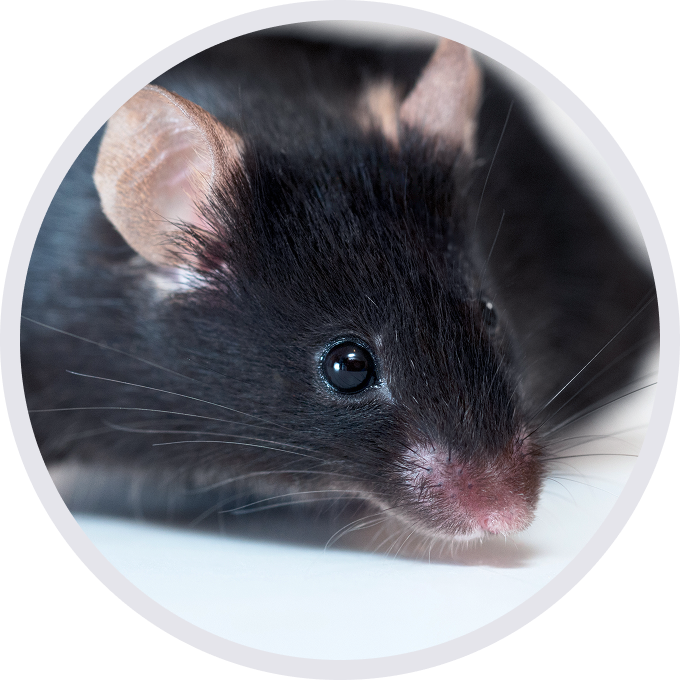
C57BL/6JNifdc-B2mtm1(B2M/HLA-A1.1/H2-D)Bcgen/Bcgen • 113700
Gene targeting strategy for B-HLA-A1.1 mice. The B2M gene (Exon1 to Exon3) of mouse were replaced by the sequence encompassing the human B2M CDS and HLA-A*0101 gene that included leader sequence, α1 and α2 domains ligated to a fragment of the murine H-2Db gene containing the α3, transmembrane and cytoplasmic domains.
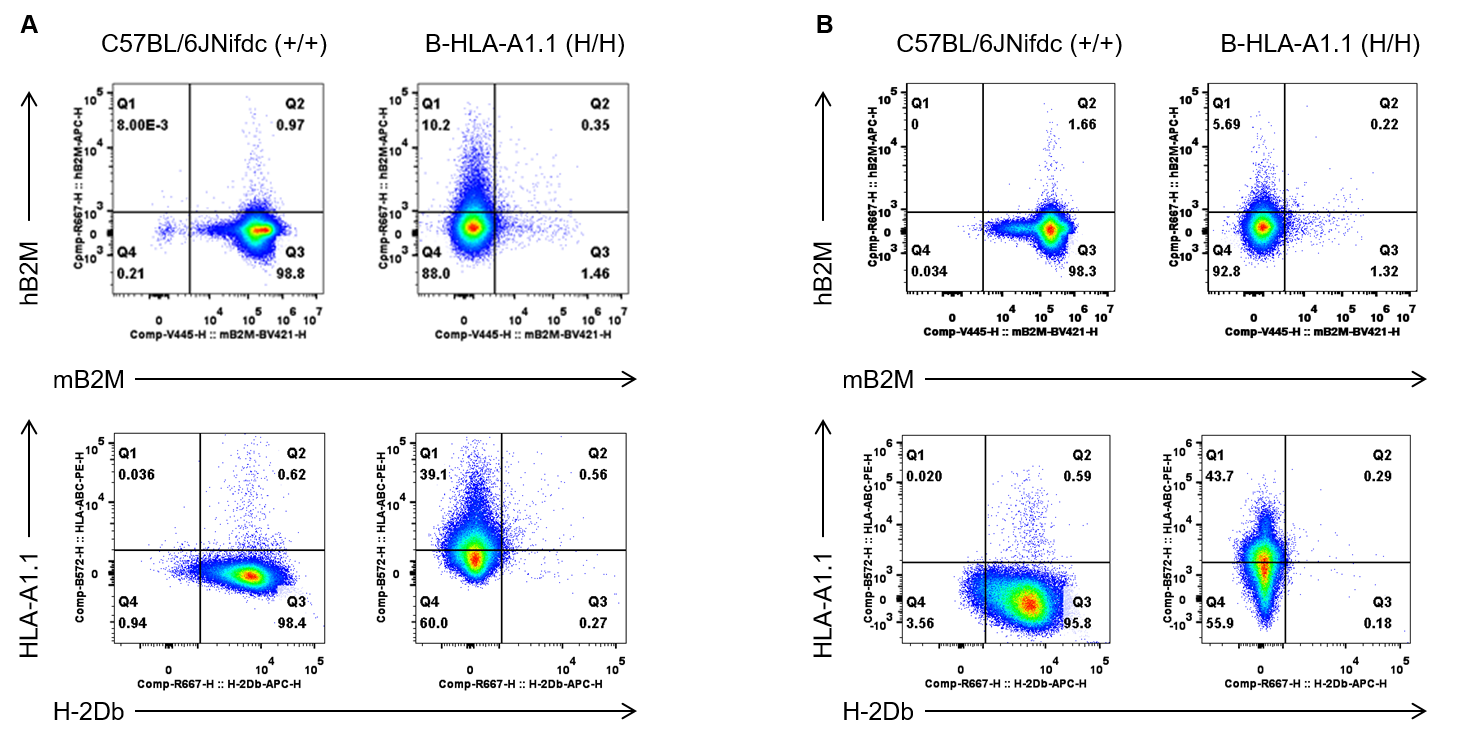
Strain specific B2M and HLA-A1.1 expression analysis in wild-type C57BL/6JNifdc mice and homozygous humanized B-HLA-A1.1 mice by flow cytometry. Splenocytes (A) and blood (B) were collected from wild-type C57BL/6JNifdc mice (+/+) and homozygous B-HLA-A1.1 mice (H/H), respectively, and analyzed by flow cytometry with species-specific anti-HLA-A1.1 (Biolegend, 311406), anti-H-2Db (Biolegend, 111513), anti-hB2M (Biolegend, 395712), and anti-mB2M (BD Biosciences, 744802) antibody. HLA-A1.1 and human B2M were exclusively detectable in homozygous B-HLA-A1.1 mice.
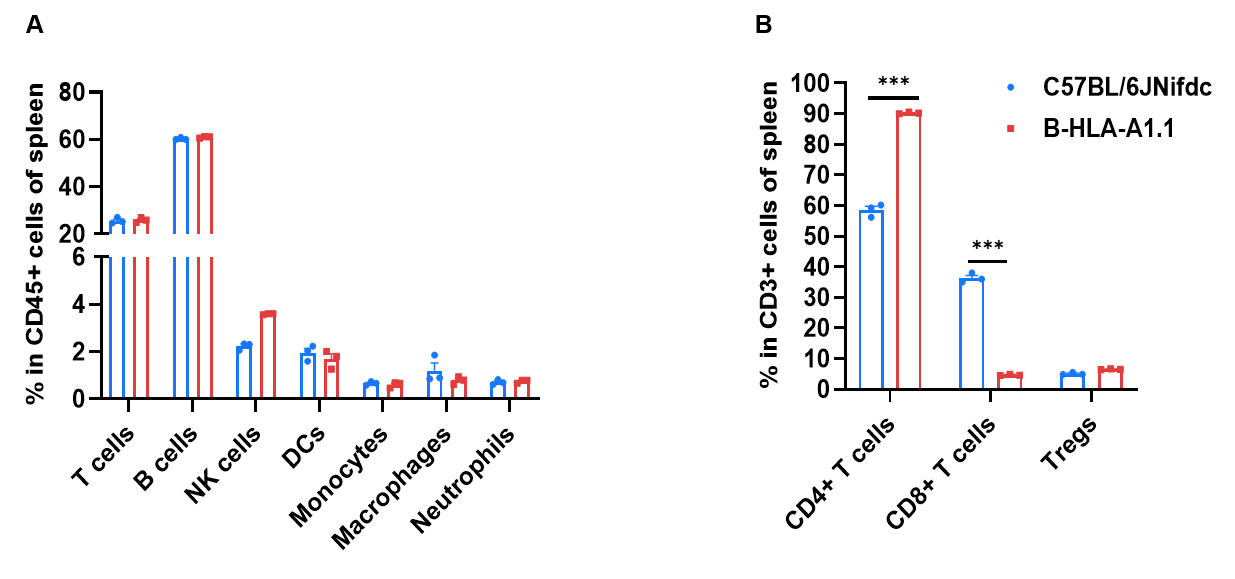
Frequency of leukocyte subpopulations in spleen by flow cytometry. Splenocytes were isolated from wild-type C57BL/6JNifdc mice and homozygous B-HLA-A1.1 mice (female, 9-week-old, n=3). A. Flow cytometry analysis of the splenocytes was performed to assess the frequency of leukocyte subpopulations. B. Frequency of T cell subpopulations. Frequencies of T cells, B cells, NK cells, dendritic cells, monocytes, macrophages, neutrophils and Tregs in B-HLA-A1.1 mice were similar to those in C57BL/6JNifdc mice. The frequency of CD8+ T cells in B-HLA-A1.1 mice were lower than in C57BL/6JNifdc mice, whereas the frequency of CD4+ T cells in B-HLA-A1.1 mice were higher than in C57BL/6JNifdc mice. Values are expressed as mean ± SEM. Significance was determined by two-way ANOVA test. *P < 0.05, **P < 0.01, ***p < 0.0001.
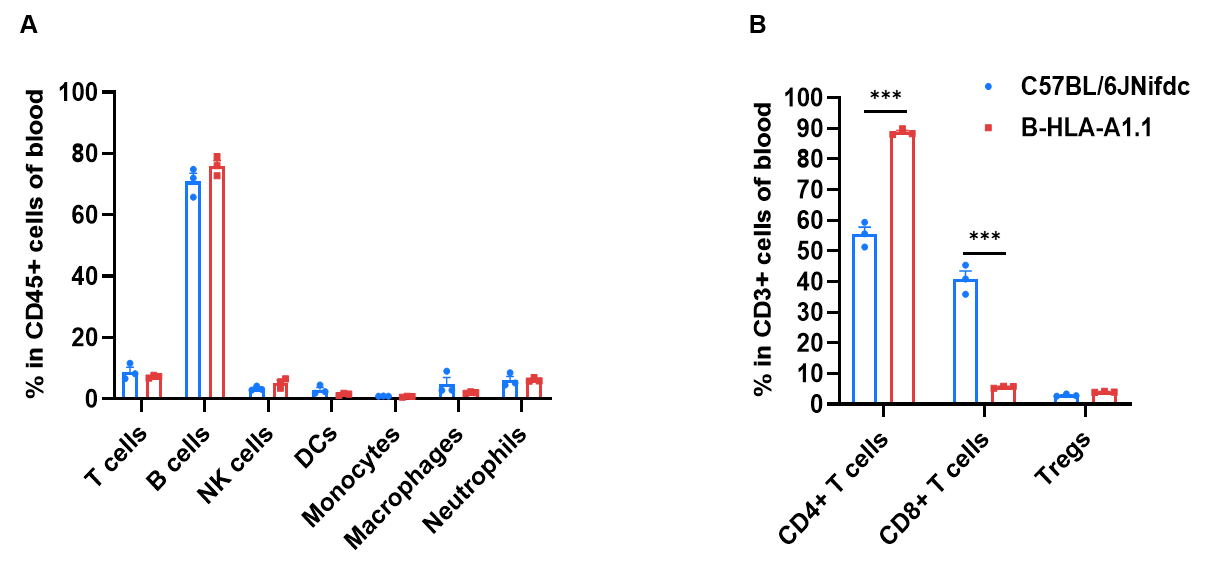
Frequency of leukocyte subpopulations in blood by flow cytometry. Blood were isolated from wild-type C57BL/6JNifdc mice and homozygous B-HLA-A1.1 mice (female, 9-week-old, n=3). A. Flow cytometry analysis of the blood was performed to assess the frequency of leukocyte subpopulations. B. Frequency of T cell subpopulations. Frequencies of T cells, B cells, NK cells, dendritic cells, monocytes, macrophages, neutrophils and Tregs in B-HLA-A1.1 mice were similar to those in C57BL/6JNifdc mice. The frequency of CD8+ T cells in B-HLA-A1.1 mice were lower than in C57BL/6JNifdc mice, whereas the frequency of CD4+ T cells in B-HLA-A1.1 mice were higher than in C57BL/6JNifdc mice. Values are expressed as mean ± SEM. Significance was determined by two-way ANOVA test. *P < 0.05, **P < 0.01, ***p < 0.0001.
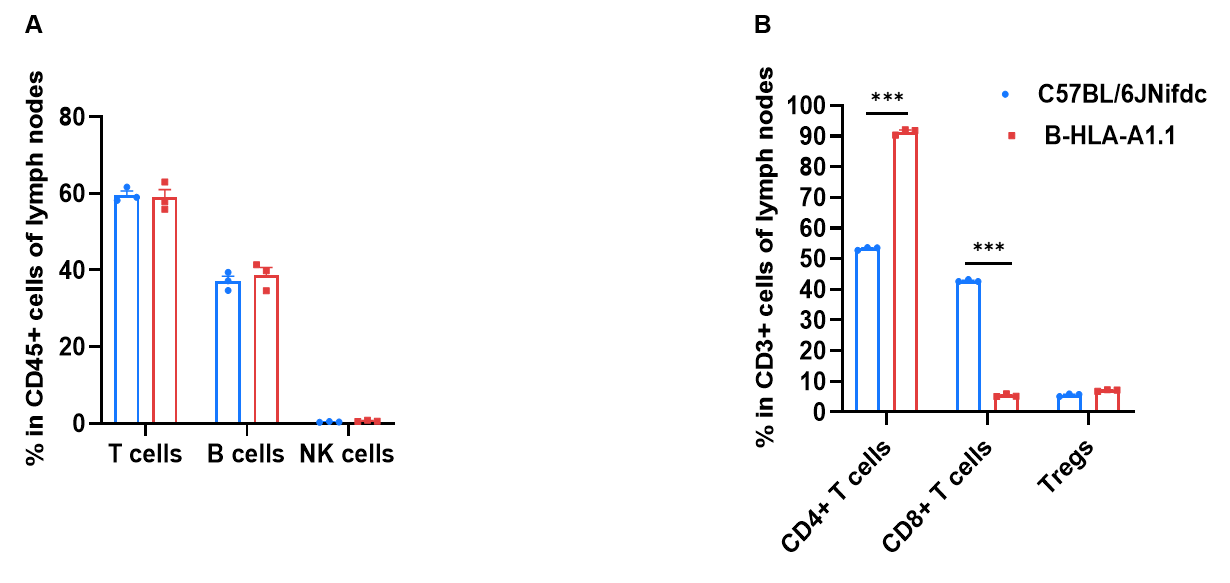
Frequency of leukocyte subpopulations in lymph node by flow cytometry. Lymph node cells were isolated from wild-type C57BL/6JNifdc mice and homozygous B-HLA-A1.1 mice (female, 9-week-old, n=3). A. Flow cytometry analysis of the lymph node was performed to assess the frequency of leukocyte subpopulations. B. Frequency of T cell subpopulations. Frequencies of T cells, NK cells and Tregs in B-HLA-A1.1 mice were similar to those in C57BL/6JNifdc mice. The frequency of CD8+ T cells in B-HLA-A1.1 mice were lower than in C57BL/6JNifdc mice, whereas the frequency of CD4+ T cells in B-HLA-A1.1 mice were higher than in C57BL/6JNifdc mice. Values are expressed as mean ± SEM. Significance was determined by two-way ANOVA test. *P < 0.05, **P < 0.01, ***p < 0.0001.
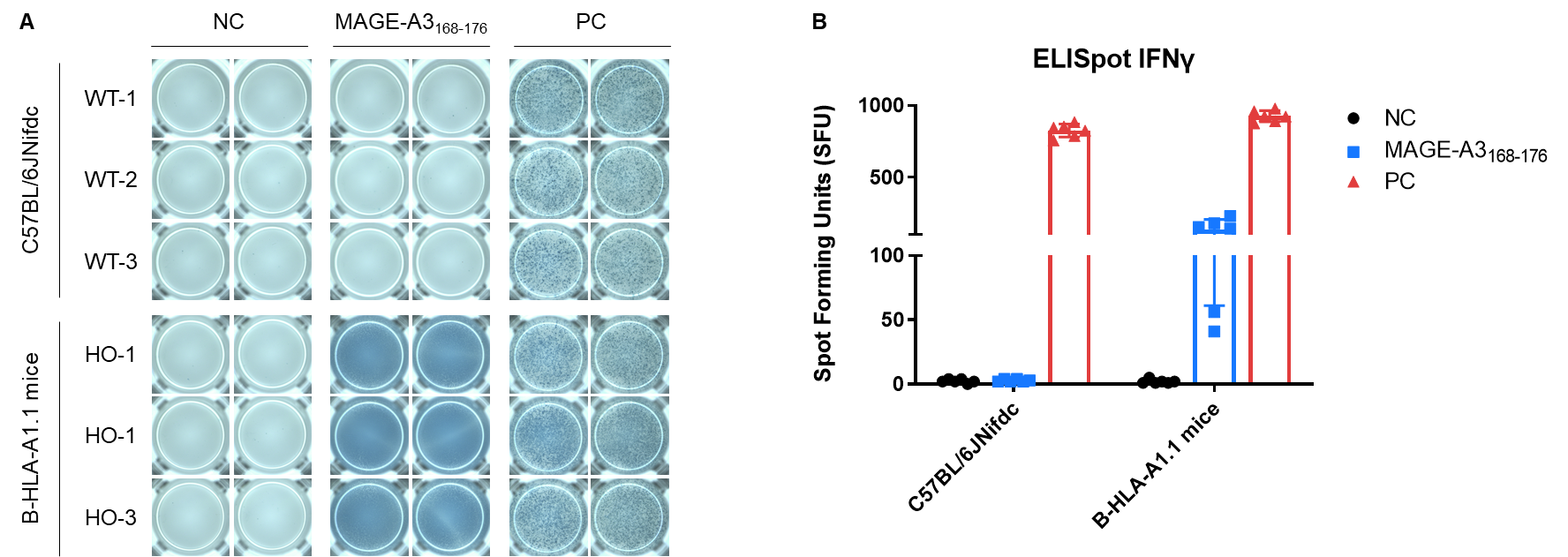
Detection of vaccine-induced immune responses in B-HLA-A1.1 mice by IFN-γ ELISpot assay. Female C57BL/6JNifdc mice and B-HLA-A1.1 mice at the age of 7–8 weeks were divided into PBS group and MAGE-A3168-176 group (n = 3), and then inoculated PBS or the peptide at the inside muscle of both legs. Three weeks after the last immunization, mice were sacrificed. The splenocytes were extracted, stimulated with individual peptide or PBS as negative control (NC) or PMA/Ionomycin(R&D, 423302) as positive control(PC), and then measured for IFN-γ secretion. No significant difference in body weight among groups (Data was not shown). (A) Representative results showing stimulation of splenocytes harvested from immunized mice with negative control, the peptide, or positive control in duplicates. (B) Summary of results. The results demonstrate that B-HLA-A1.1 mice provide a powerful preclinical model for in vivo evaluation of vaccines. NC: negative control, PC: positive control.